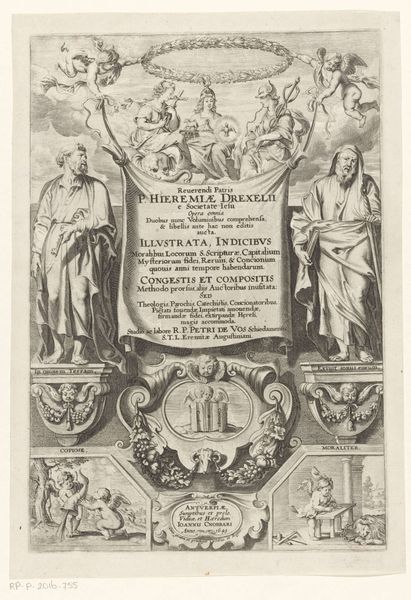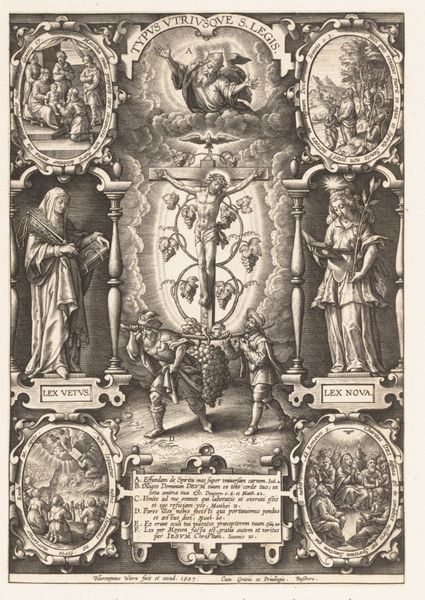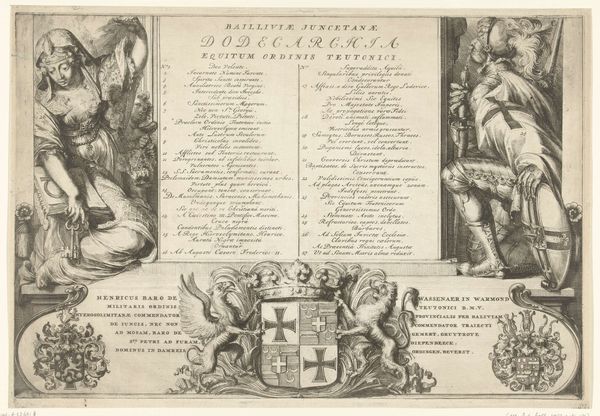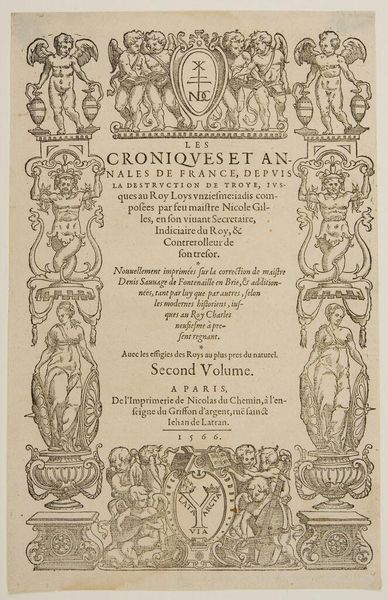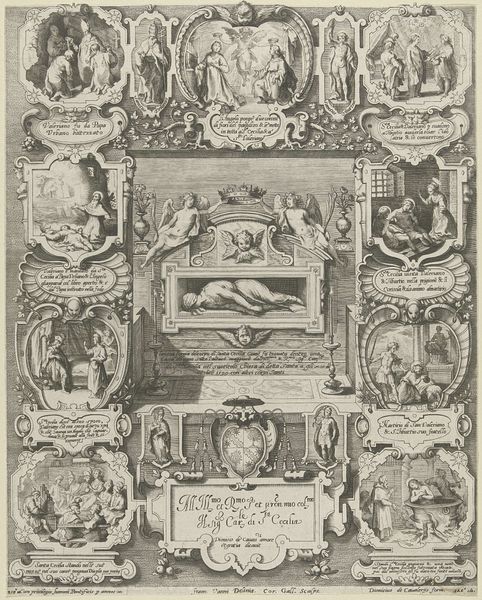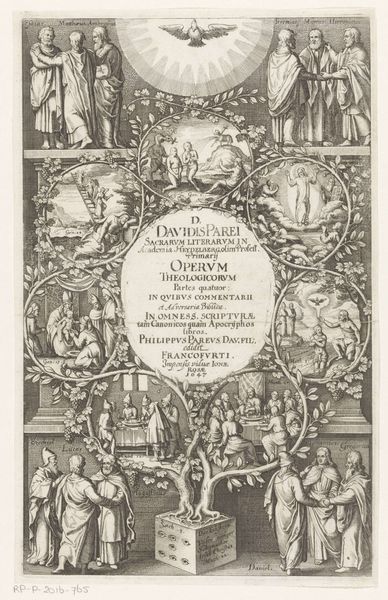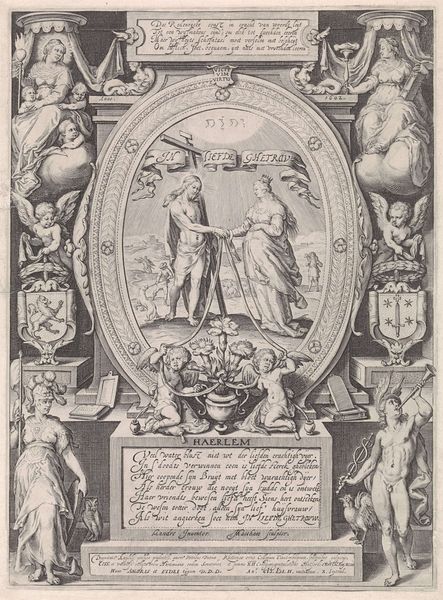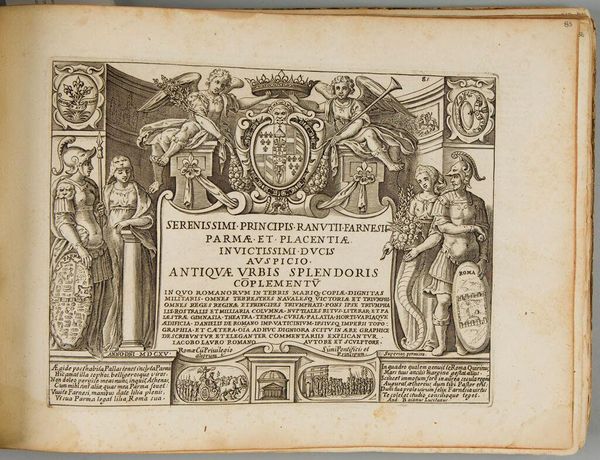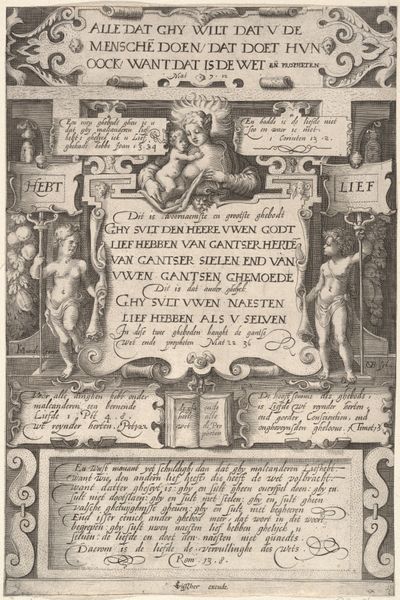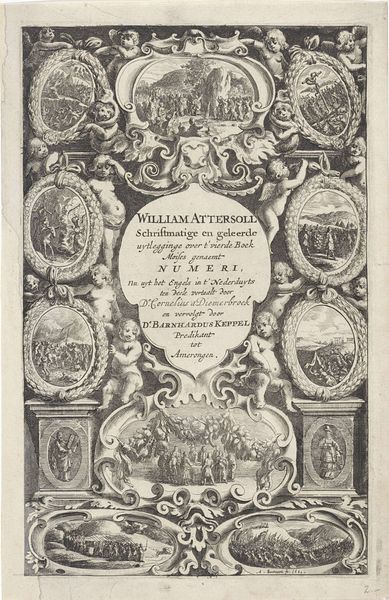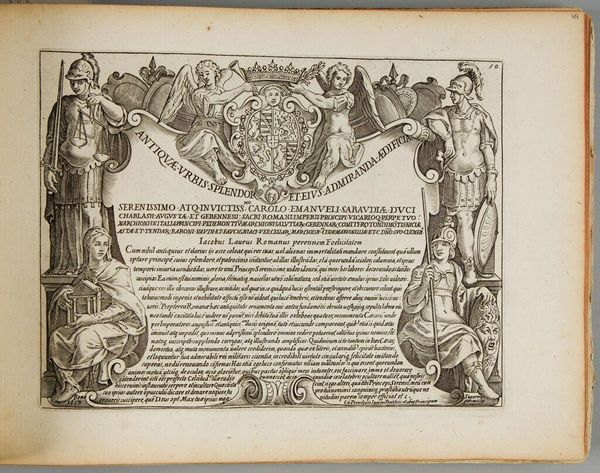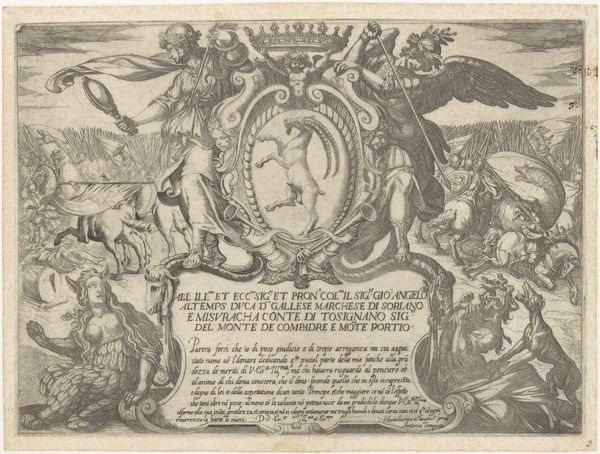
engraving
#
portrait
#
baroque
#
pen drawing
#
dutch-golden-age
#
history-painting
#
engraving
#
calligraphy
Dimensions: height 476 mm, width 315 mm
Copyright: Rijks Museum: Open Domain
Curator: I find myself drawn to the texture. Editor: Today we're looking at an engraving dating from around 1612, titled *Portret van Maurits, prins van Oranje* by Nicolaes van Geelkercken. It’s held at the Rijksmuseum. And, yes, I agree, that intense, dark hatching. Curator: It's so incredibly dense. Almost overwhelming, as if the weight of history itself is pressing down from the page. You know? So intricate. Is the message doing the work, or the mark making? Editor: I see your point! Structurally, the portrait anchors the composition, surrounded by text and allegorical figures. The artist uses line and form to create a sense of controlled chaos that serves to promote Prince Maurits as a military leader. Curator: It really embodies that Baroque aesthetic. The drama, the grandeur—though restrained by the medium, it’s palpable. Is he someone I want to celebrate or fear? Editor: Given its origin, and that text “TOT LOF ZYNDER PRINSLYCKE EER,” or “To the Glory of His Princely Honor,” there's a strong intention for adulation. Consider the vignettes along the edges; alluding to historical events, each is framed within their individual oval that celebrates Maurits. Curator: I wonder, what would Maurits himself have made of it? All this lettering—a swirling chaos and order—sort of mirrors his life in that moment, a time of massive religious upheaval and change. Editor: And it's no simple image. Each detail reinforces the Prince's image through carefully constructed heraldry and visual cues designed to evoke themes of victory, leadership, and legacy. A classic Golden Age power move. Curator: Ultimately, Geelkercken’s image is about conveying more than a physical likeness; it seeks to establish a legacy of strength, faith, and national identity. Editor: And, viewed today, it is still successful at communicating a powerful historical figure, yet one bound to the artistic conventions and intentions of his own era.
Comments
No comments
Be the first to comment and join the conversation on the ultimate creative platform.
